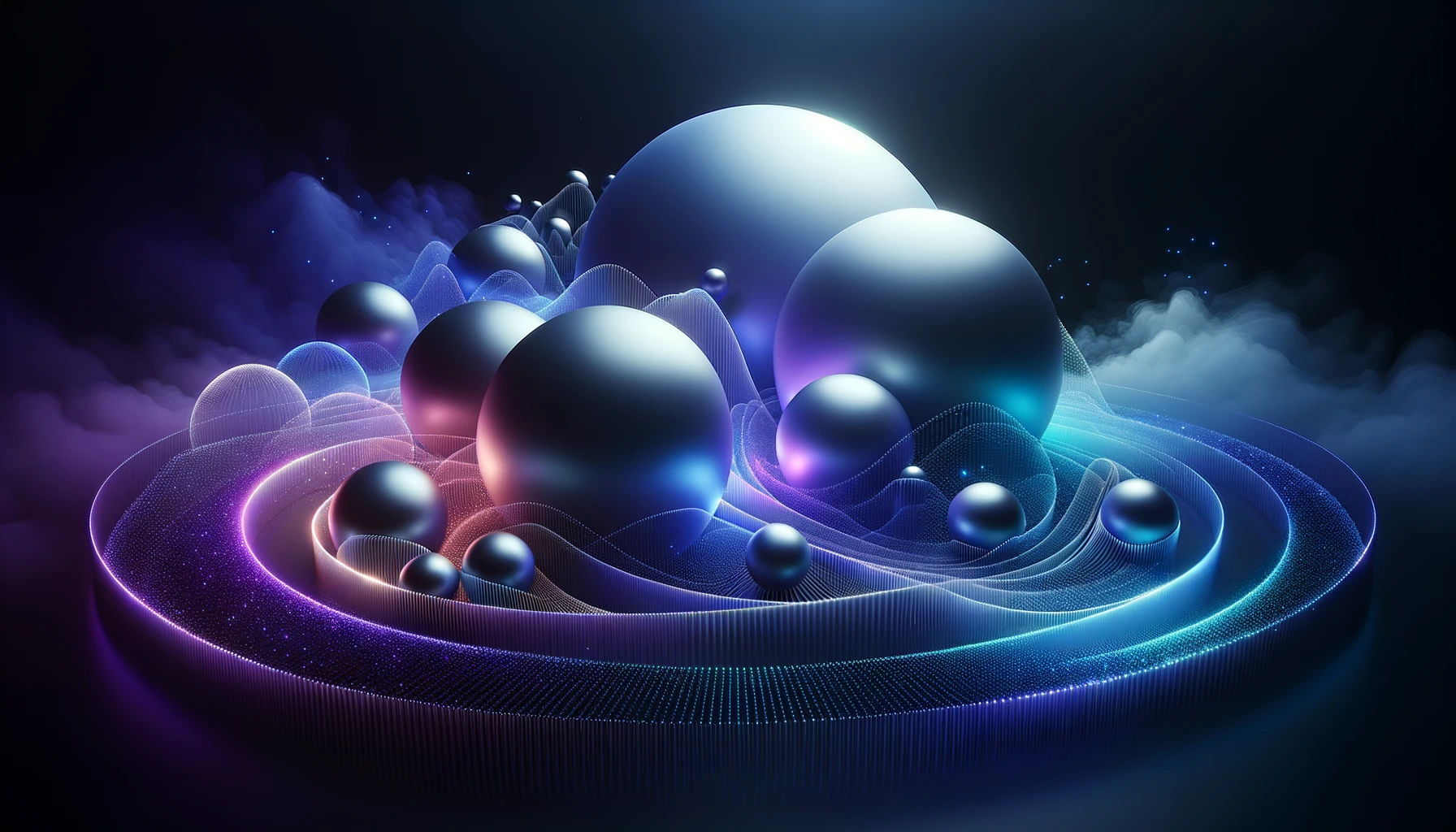Just as surfers ride the vast waves of the ocean, quasiparticles navigate the deep currents of low-temperature quantum physics, illuminating phenomena like superfluidity and superconductivity. Drawing inspiration from these quantum waves, we've charted a course in classical physics, unraveling the collective dance of particles as they interact within the two-dimensional seas of room temperature flows.
Views 2458
Reading time 4 min
published on Oct 23, 2023
Understanding a physical system is the art of distillation. Within an infinitely entangled reality, one must look at the proper scale and focus on the relevant phenomena to unlock the underlying simplicity. For example, to understand the motion of the sea, it would be futile to think about how each water molecule bounces around. Thinking about waves is much more effective.
This principle is particularly true in condensed matter. Here, atoms are close to each other and, therefore, strongly interact. This “many-body” physics is impossible to understand based on the dynamics of single particles. However, a brilliant solution to this problem was introduced by Lev Landau in 1941: Don’t look at strongly-interacting particles, like the water molecules in the sea. Instead, think about the excitations of the system, much like we do when we think about sea waves. Then, we can consider the excitations as “effective particles” or quasiparticles. Landau’s idea has been immensely fruitful in quantum matter. Famous examples include superconductivity and superfluidity and, recently, the motion of electrons in 2D honeycomb crystals made of carbon - a material called graphene.
As we mentioned, all known examples of quasiparticles occur in quantum systems, which is not accidental. In classical materials, excitations collide too frequently, so any potential quasiparticles would die out too quickly to be observed. In the following, we describe how one can break this paradigm that quasiparticles exist only in quantum mechanics. The surprising counter-example we will discuss is the discovery of quasiparticles in a classical system: a 2D lattice made of particles in viscous flow. As in quantum matter, the classical quasiparticles clearly explained a collective feature of the flowing crystal: the melting transition of a hydrodynamic crystal.
In our example, the quasiparticles are simply pairs of micron-size particles. These pairs emerge thanks to a peculiar symmetry of the viscous flow. When the particles are pushed through a channel filled with water, their motion perturbs the streamlines of water around them. In this manner, the particles “feel” and affect the motion of other particles around them. These are hydrodynamic forces similar to those we feel in a swimming pool when another swimmer passes nearby. The peculiar symmetry of these interactions induced by the flow is that the forces between two particles are equal in magnitude but are also in the same direction. In contrast, forces between particles are opposite in their direction. For example, when we push a wall with a specific force, the wall exerts an opposite force equal in magnitude on us. The critical result of this “same-direction” symmetry is that pairs of particles emerge and remain stable because the two particles apply on each other equal forces, so they keep moving together at equal velocities.
These particle pairs (or duos) are classical quasiparticles, which one may call “duons”. These are the fundamental excitations of the flowing system, just like excitations of electrons are the basis of superconductivity. Our idea was confirmed by analyzing how large 2D hydrodynamic crystals vibrate when they flow in a viscous fluid. Looking at the spectrum of the vibrations, we found a noticeable conical shape. In graphene electronics, these shapes got the name “Dirac cones” because the electronic quasiparticles obey an equation proposed by the physicist Paul Dirac. We were surprised to find that the flowing pairs (“duons”) are actually Dirac quasiparticles, but in an utterly classical system.
When the duons collide further and further, the crystal eventually melts, and we see a random collection of particles. To understand how the melting occurs, we followed a flowing crystal and saw how the vibrations developed. This examination showed the emergence of strong vibrations precisely at the Dirac cones - a clear indication that duons were generated. When the newly generated duons become dense, they violently collide, bringing about melting the crystal. Another way to see this is to start from a perfect crystal with an isolated duon (see figure). Much like a supersonic jet plane leaving behind a trail, our duon quasiparticle moves quickly, causing a ripple effect that creates more and more pairs. These two observations reveal the excitation of duons quasiparticles is what drives the melting transition.
But quasiparticles are not the whole story. We found a qualitatively different pathway to disorder by melting in hexagonal crystals. This is a special case because the three-fold symmetry of the crystal matches the symmetry of flow-induced forces. The result is the formation of an exotic structure called a “flat band” – a region in the spectrum dense with ultra-slow vibrations. Electronic flat bands were recently discovered in graphene, and they are of great interest because these “flat” excitations strongly interact. In the hexagonal crystal, we observed a second type of melting transition driven by these flat band waves.
Our results suggest that emergent collective phenomena – like quasiparticles and flat bands – are not at all limited to quantum systems. They may be observed in classical settings such as chemical systems and even living matter. Thus, they may be more abundant them we previously realized. We expect that many more quantum-like phenomena will be observed in other classical systems and will help explain their emergent modes.
Original Article:
I. Saeed, H. K. Pak, and T. Tlusty, “Quasiparticles, flat bands and the melting of hydrodynamic matter,” Nature Physics, Jan 2023.
 Maths, Physics & Chemistry
Maths, Physics & Chemistry



